No products in the cart.
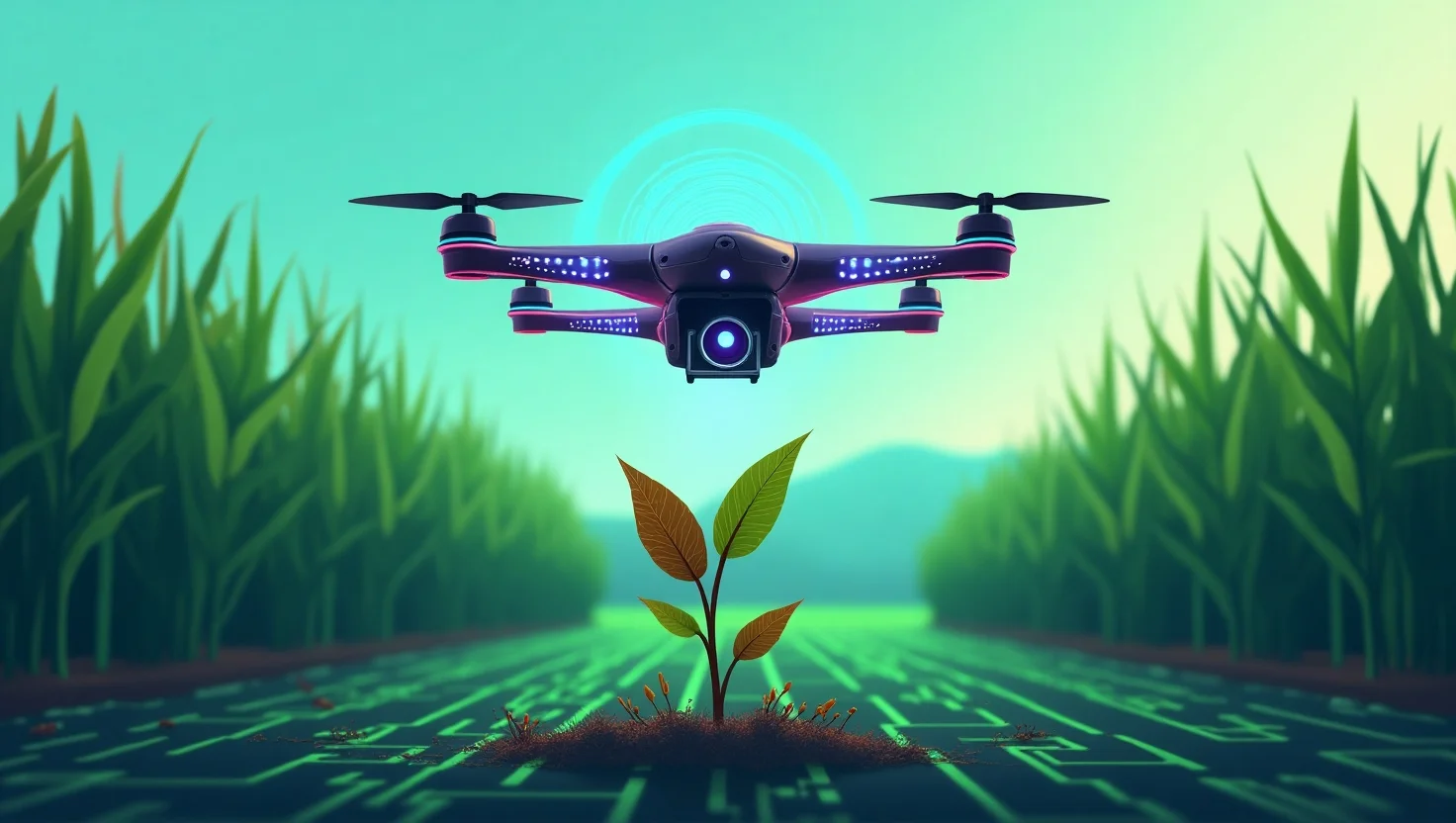
1. Introduction:
By 2050, global food demand is expected to increase by nearly 70%, putting enormous pressure on farmers to grow more with fewer resources. Traditional farming methods, though time-tested, are struggling to keep up with the changing climate, labor shortages, and the need for sustainable solutions. Fields once managed by intuition alone now face challenges that require precision, prediction, and smarter planning.
This is where Smart Farming steps in.
Smart Farming, powered by AI in agriculture, is revolutionizing how we grow food. From analyzing soil health in real-time to automating irrigation and predicting crop diseases, these technologies are helping farmers work more efficiently and sustainably. But for many, the idea of digital agriculture still feels complex or out of reach.
In this Smart Farming For Beginner friendly guide, we’ll break down what smart farming really means, how it works, and how even small farms can benefit. You’ll learn about the tools, technologies, and real-world examples that are transforming farming into a data-driven, efficient, and resilient industry.
Whether you’re a curious reader, an aspiring AgTech entrepreneur, or a farmer ready to innovate, this guide is your starting point.
2. The Problem: Traditional Farming Limitations
For centuries, agriculture has relied on tradition, planting by season, watering by habit, and harvesting by feel. While this approach has fed generations, it’s no longer enough. Traditional farming methods face a growing list of limitations that are holding farmers back in today’s fast-evolving agricultural landscape.
One of the biggest challenges is inefficiency. Manual processes lead to overuse of water, fertilizer, and labor, draining resources and raising costs. As climate patterns become more unpredictable, farmers relying solely on experience are often left unprepared for droughts, floods, or pest outbreaks.
Another major issue is labor. Many regions now suffer from farmworker shortages, making it difficult to manage large fields or livestock operations. Add to this the pressure to reduce environmental impact, and it becomes clear that conventional approaches are no longer sustainable.
In contrast, smart farming offers solutions tailored to modern problems. Yet many small and mid-size farmers are still unaware of how accessible these tools have become. Understanding the pain points of traditional agriculture is the first step toward embracing innovation.
In the next section, we’ll explore how smart farming, with the power of AI in agriculture, solves these problems with precision, data, and automation.
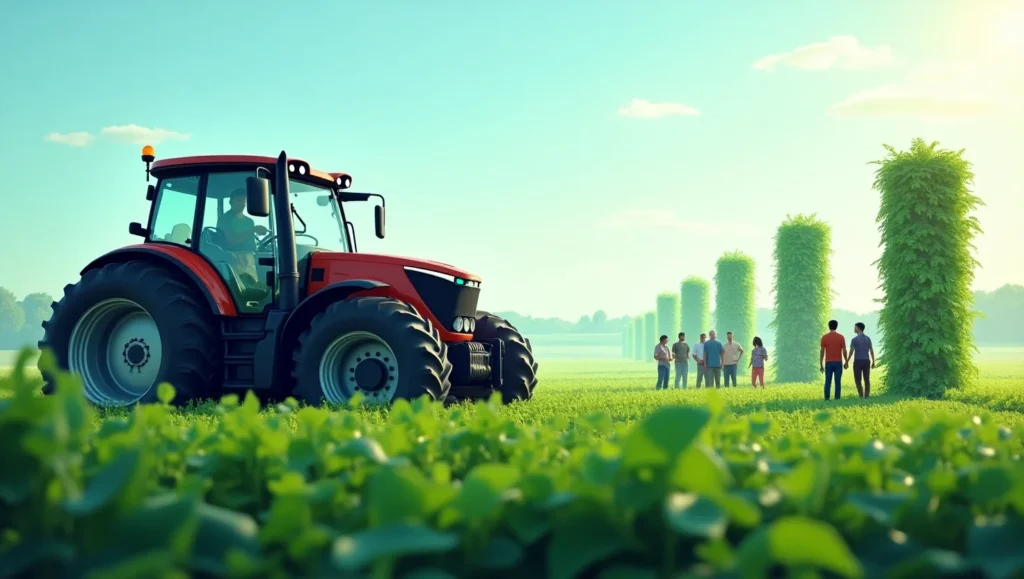
3. The Solution: Introduction to Smart Farming
So, what exactly is Smart Farming? In simple terms, smart farming, also known as digital agriculture, is the use of advanced technologies like AI, IoT sensors, drones, and data analytics to improve farm productivity and efficiency. Unlike traditional methods that rely heavily on manual labor and guesswork, smart farming uses real-time data and automation to make precise decisions.
Imagine being able to monitor your crops remotely, detect plant diseases before they spread, or know the exact moisture level of your soil without digging. These are not futuristic dreams, they’re everyday realities on farms that have adopted smart agriculture solutions.
At the heart of smart farming is AI in modern farming. Artificial intelligence helps analyze data from various sources like weather patterns, satellite imagery, and soil sensors. This allows farmers to make informed decisions, reduce waste, and improve crop health and yield.
Smart farming isn’t just for large, commercial farms anymore. With falling technology costs and user-friendly platforms, even small and medium-sized farms can begin to integrate AI tools into their workflow.
In the next section, we’ll explore the specific technologies driving this transformation, from precision sensors to autonomous machinery.
4. Key Smart Farming Technologies at Work
The transformation of agriculture is being fueled by a powerful blend of technologies, each designed to solve real farming challenges. These smart farming tools are making agriculture more data-driven, accurate, and less reliant on manual labor.
One of the most widely used tools is the IoT sensor. These devices collect real-time data on soil moisture, temperature, nutrient levels, and even plant health. Farmers can access this data remotely and make informed decisions about irrigation, fertilization, and harvesting, reducing waste and maximizing efficiency.
Agriculture drones are another game-changer. Equipped with high-resolution cameras and thermal sensors, they provide aerial insights into crop conditions, spot pest infestations, and even help with spraying pesticides more precisely.
At the center of it all is AI in precision agriculture. AI systems analyze data from these devices to recommend the best time to plant, water, or apply treatments. Combined with machine learning in farming, these tools continuously improve over time, learning from patterns and making smarter predictions with each season.
Autonomous tractors, robotic harvesters, and smart irrigation systems are also becoming more common, especially in larger farms.
These technologies aren’t just innovations, they are practical solutions designed to increase yield, cut costs, and reduce environmental impact. Next, we’ll explore the real-world benefits of adopting smart farming.
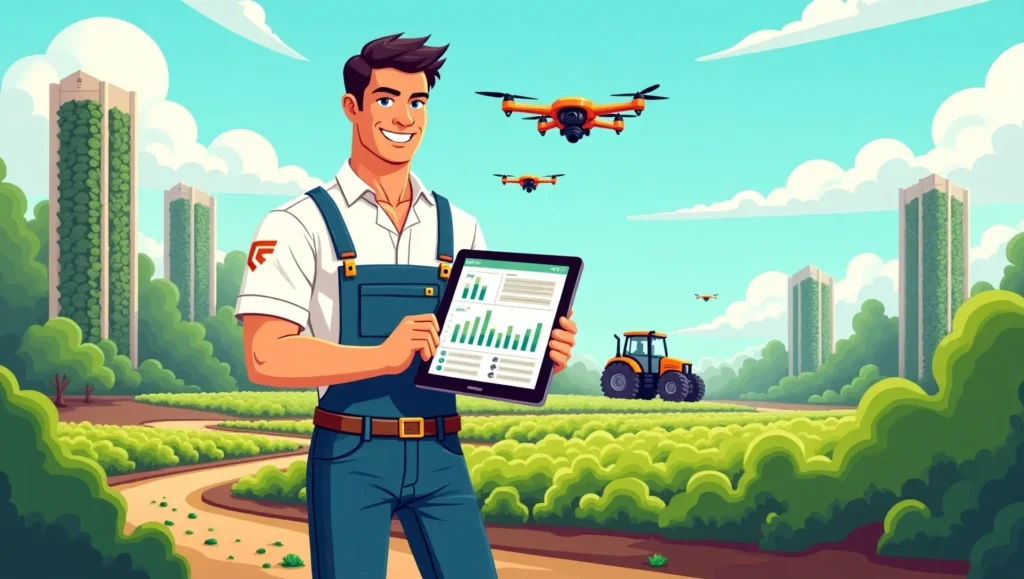
5. Benefits of AI in Agriculture
Adopting AI in agriculture isn’t just a tech trend, it brings measurable benefits that are transforming farms of all sizes. From boosting yields to promoting sustainability, smart farming is proving to be a practical and profitable solution.
One of the biggest benefits is increased productivity. AI-powered systems analyze real-time data to ensure crops get the right amount of water, fertilizer, and sunlight. This leads to better crop health and significantly higher yields, often with fewer inputs.
Another major advantage is cost efficiency. Smart tools help reduce unnecessary resource use, like overwatering or over-fertilizing, which not only saves money but also protects the environment. Over time, these savings can add up to a substantial return on investment, especially for small and medium-sized farms.
Smart farming also supports sustainability. By using resources only when needed and minimizing waste, farmers can reduce their environmental footprint. Precision agriculture even helps limit the use of harmful chemicals, contributing to healthier soil and cleaner water.
Finally, smart systems improve decision-making. With AI delivering real-time insights and predictions, farmers can respond faster to challenges and plan more effectively.
Next, let’s look at a real-world case study to see how smart farming works in practice.
6. Case Study: Small Farm Goes Smart
Meet Ahmed, a mid-sized vegetable farmer in central California. Like many farmers, he faced challenges with rising labor costs, water shortages, and unpredictable weather. Traditional methods were no longer enough to maintain profitability. That’s when he decided to try smart farming on a small scale.
Starting with a limited budget, Ahmed installed affordable soil moisture sensors and subscribed to an AI-powered farm management app. The app used real-time weather forecasts and soil data to recommend optimal watering schedules. Within the first growing season, his water usage dropped by 30%, without sacrificing crop quality.
Encouraged by the results, he added a drone for crop monitoring and began using AI-based analytics to detect nutrient deficiencies early. As a result, his vegetable yield increased by 18%, and his costs decreased by nearly 20%.
This AI farming success story proves that digital agriculture isn’t just for large enterprises. With the right tools, even a modest farm can increase efficiency, sustainability, and profit.
Smart farming is more accessible than ever, and it starts with a single step. In the next section, we’ll explore how beginners can start adopting AI in agriculture without feeling overwhelmed.
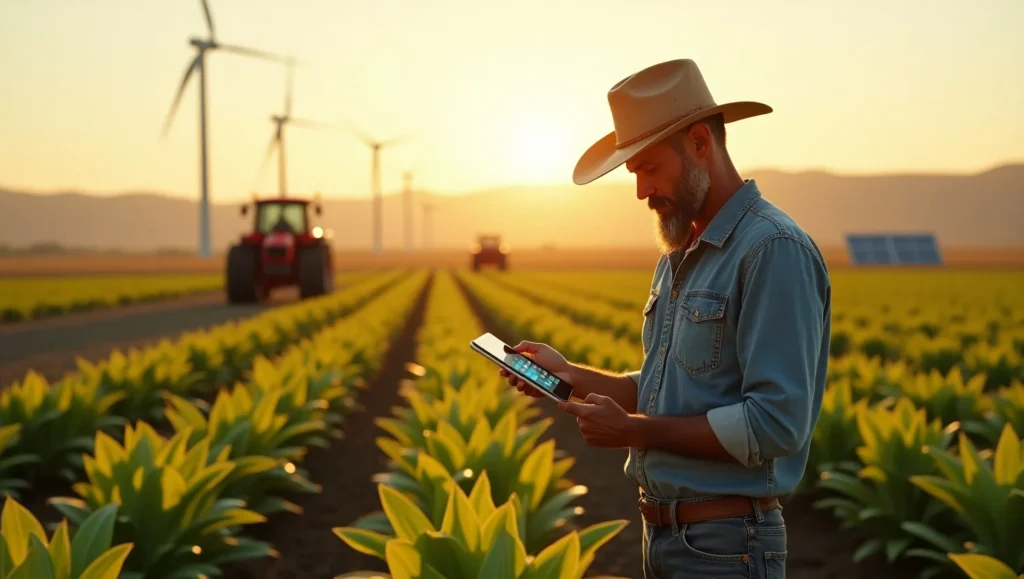
7. Getting Started with Smart Farming
Taking the first step into smart farming might feel intimidating, especially if you’re not tech-savvy. But the truth is, modern tools are becoming more user-friendly and affordable, even for small farm owners. The key is to start simple and scale up gradually.
Begin with a basic need. If water management is a challenge, try installing IoT soil moisture sensors. They’re easy to use and can drastically reduce water waste while improving crop health. If monitoring crop conditions is your priority, consider using drone services or smartphone-compatible sensors for aerial insights.
Next, choose a beginner-friendly AI-powered farm management platform. Many apps offer dashboards that track crop cycles, weather, and input usage. These platforms use AI to provide actionable recommendations, even if you’re not familiar with data analysis.
Don’t forget education. Free webinars, agricultural extension services, and platforms like YouTube are rich with tutorials on how to start smart farming without breaking the bank.
Lastly, remember that smart farming is not an all-or-nothing shift. Start with one or two tools, assess their impact, and expand from there. With every step, you’ll gain confidence, and results.
In the final section, we’ll summarize key takeaways and help you decide if now’s the time to digitize your farm.
8. Conclusion: The Future of Farming Starts Now
Agriculture is entering a new era, one where data, automation, and artificial intelligence are as important as seeds and soil. As this guide has shown, smart farming is not only the future, it’s already here, transforming farms around the world.
Whether it’s improving crop yields, reducing costs, or making agriculture more sustainable, AI in agriculture is solving real problems with real results. Farmers who adopt smart tools are gaining a competitive edge while also building more resilient operations that can adapt to climate change, labor shortages, and shifting market demands.
Importantly, you don’t need a huge budget or advanced tech skills to get started. From affordable sensors to AI-driven apps, smart farming tools are increasingly accessible, even for beginners. The key is to start small, stay curious, and build step by step.
If you’re wondering whether now is the right time to embrace this change, the answer is yes. The earlier you begin, the more you’ll benefit in the long run.
Smart farming is no longer optional. It’s essential. The future of farming starts now, and it starts with you.
Frequently Asked Questions (FAQs)
Q1. What is smart farming in simple terms?
Smart farming refers to using technology, like AI, sensors, drones, and data analytics, to optimize agricultural activities. It helps farmers make better decisions, save resources, and boost crop yields efficiently.
Q2. How does AI help in agriculture?
AI in agriculture analyzes large amounts of data from farms to offer insights on soil health, weather predictions, crop diseases, and irrigation needs. It helps improve productivity, reduce waste, and make real-time decisions.
Q3. Is smart farming only for large farms?
No, smart farming tools are now affordable and scalable. Even small farms can start with basic technologies like soil sensors or AI-based farm apps to improve their operations.
Q4. What are the main benefits of smart farming?
Smart farming increases crop yields, reduces input costs (like water and fertilizer), improves sustainability, and helps predict and prevent problems before they occur.
Q5. How can I get started with smart farming?
Start by identifying your biggest farming challenge, whether it’s water use, crop monitoring, or labor. Then choose a simple, beginner-friendly smart tool like an IoT sensor or farm management app to begin your journey.
Related Articles
Livestock Farming
AI in Aquaculture: How Smart Tech is Transforming Fish Farming
1. Introduction: The world’s appetite for seafood is growing fast, yet traditional...
Livestock Farming
The Future of Farming: Why AI-Powered Tractors Are Gaining Popularity
1. Introduction: Across the world, farmers are grappling with rising costs, shrinking...
Livestock Farming
Using AI to Track Livestock Health and Prevent Disease Outbreaks
1. Introduction: In recent years, livestock farmers around the world have faced...
Livestock Farming
How Machine Learning Is Changing Fertilizer Application on Farms
1. Introduction: For decades, farmers have applied fertilizer using general formulas, blanket...
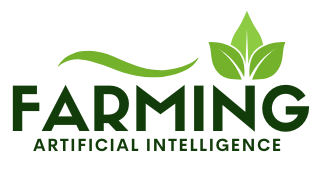
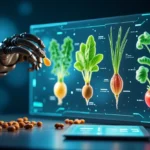

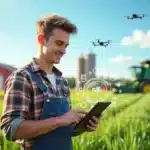

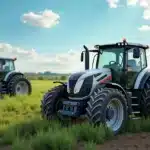


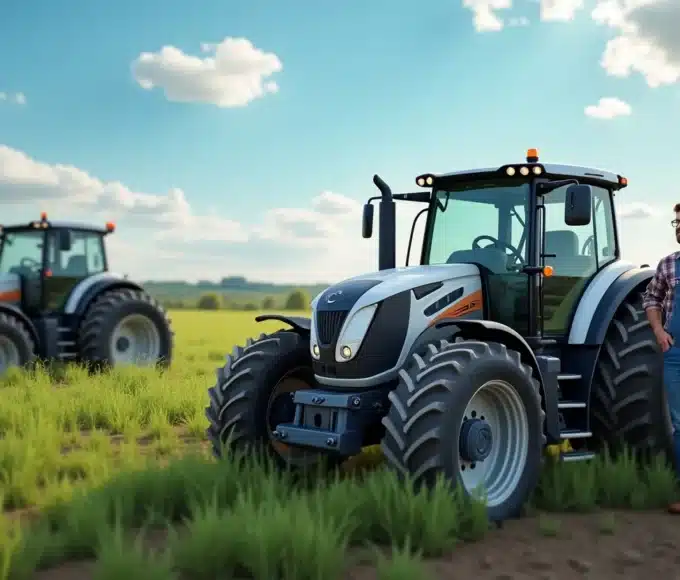
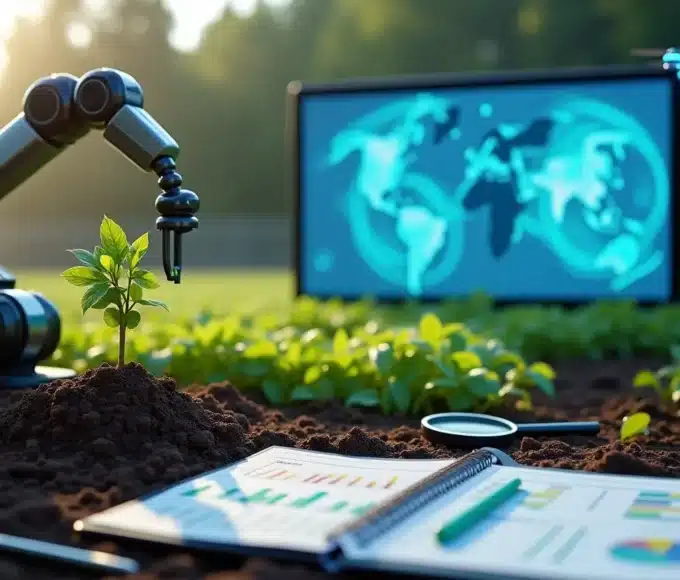
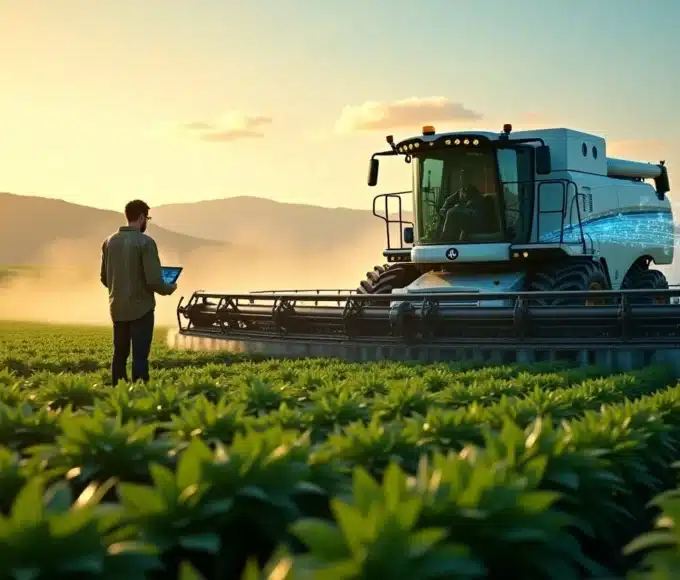
Leave a comment